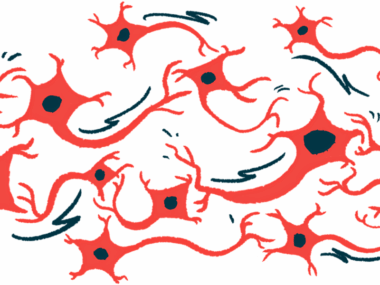Hemoglobin discovery may offer strategy for Parkinson’s treatment
Researchers find boosting brain hemoglobin eases disease severity in mice
Written by |

Hemoglobin — a protein best known for carrying oxygen in the bloodstream — has an under-recognized role in protecting brain cells from damage, researchers found.
Data from animal experiments showed that a treatment designed to boost the protective effects of hemoglobin in the brain may be an effective strategy for Parkinson’s disease and other neurological disorders.
“This is a major step forward in the fight against neurodegenerative diseases,” study co-author C. Justin Lee, PhD, director of the Center for Cognition and Sociality at the Institute for Basic Science in Daejeon, Korea, said in an institute news story. “By enhancing the brain’s own hemoglobin to combat oxidative stress, we are opening an entirely new therapeutic avenue.”
The study, “Hemoglobin as a pseudoperoxidase and drug target for oxidative stress-related diseases,” was published in Signal Transduction and Targeted Therapy.
Hemoglobin is the protein that red blood cells use to ferry oxygen through the bloodstream to all the body’s different tissues. It is also present in brain cells, but its function in the brain isn’t well understood.
Fighting oxidative stress
The scientists showed that hemoglobin in the brain is important for combating oxidative stress, a type of cellular damage driven by oxygen-containing molecules reacting with vital cellular structures such as DNA. Research has indicated that uncontrolled oxidative stress likely plays a role in driving Parkinson’s and other neurological diseases.
Hydrogen peroxide (H202) is one of the key molecules that causes oxidative stress in the human body. It’s used as a disinfectant precisely because it triggers oxidative stress in cells, which can help kill infectious bacteria. The researchers found that hemoglobin in the brain can act as a pseudoperoxidase. In other words, hemoglobin facilitates the breakdown of toxic hydrogen peroxide into harmless water, thereby reducing oxidative stress.
Since oxidative stress in the brain is thought to drive neurological disease, the researchers wondered whether it might be possible to treat neurological diseases by boosting the pseudoperoxidase activity of hemoglobin. To test the idea, the team designed a molecule, dubbed KDS12025, that can increase hemoglobin’s ability to clear away hydrogen peroxide without affecting its ability to carry oxygen. The molecule can cross the blood-brain barrier, a semipermeable membrane that protects the brain and spinal cord from the external environment but also hinders the delivery of potentially therapeutic molecules to brain cells.
The researchers tested KDS12025 in cells exposed to 6-hydroxydopamine (6-OHDA), a toxin that causes Parkinson ‘s-like damage to brain cells. Results showed that KDS12025 reduced hydrogen peroxide activity as expected.
The scientists then tested KDS12025 in a mouse model of Parkinson’s, and found that mice given the treatment had less severe motor symptoms. Tests in animal and cell models of other neurological diseases, including amyotrophic lateral sclerosis (ALS) and Alzheimer’s disease, showed that KDS12025 eased disease severity. The therapy also extended lifespan in aged mice without neurological disease.
Collectively, these findings “establish KDS12025 as a groundbreaking strategy to target [hemoglobin]’s pseudoperoxidase function to effectively treat oxidative stress-driven disorders,” the scientists wrote.
The researchers also found that brain hemoglobin levels were lower in mice with Parkinson’s than in healthy mice. Analyses of human brain samples from people with and without Alzheimer’s likewise indicated that brain hemoglobin levels are decreased in neurological diseases.
These data reveal a vicious cycle in which elevated hydrogen peroxide depletes hemoglobin. Brain cells have less ability to neutralize hydrogen peroxide, so oxidative stress continues to worsen. This finding lends further support to the idea that it may be possible to treat these diseases by increasing the pseudoperoxidase function of hemoglobin, the researchers said.
The team plans to explore the role of brain hemoglobin in greater detail and to do preclinical work aimed at moving KDS12025 towards testing in humans.






